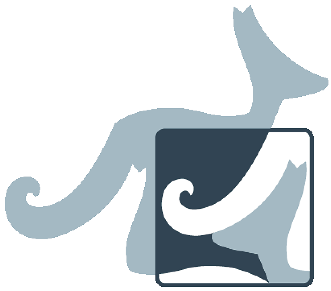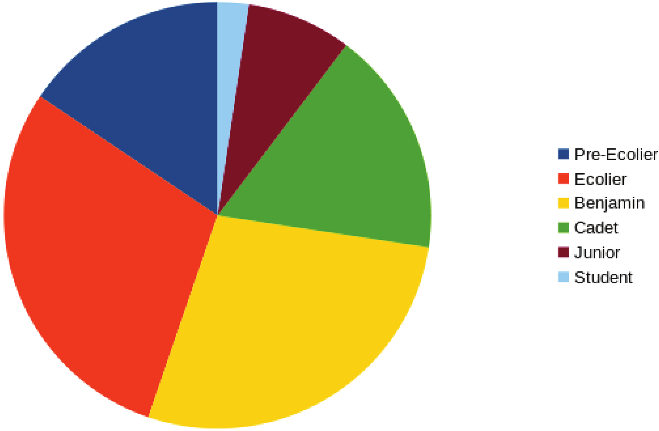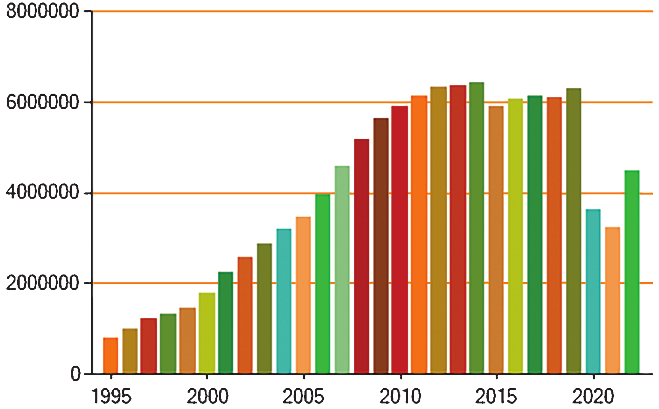PDFLINK |
AKSF & Math Kangaroo: The World’s Largest International Mathematics Competition
1. Introduction
In this article, we introduce the Kangaroo competition, the world’s largest international mathematics competition. The article is divided into two main parts. The first section explains the structure of the competition and provides the background and framework of its governance. In the second part, we provide examples of mathematics problems used in the competition and explain what makes it so special.
2. The History of AKSF
It is natural to ask why the competition is called “Math Kangaroo.” In 1978, Peter O’Halloran, an Australian teacher, see Del22, created an event that he called the Australian Mathematics Competition, which rapidly became quite popular there. This competition was in multiple-choice format, and its main objective was to stimulate the joy of mathematics and encourage mathematical problem-solving. In 1990, the French professors, Jean-Pierre Boudine and André Deledicq, with the support of Peter Taylor, professor at the University of Canberra, created a similar competition, and named it The Kangaroo of Mathematics in honor of the Australian professors. The very first competition was held in 1991. After two years of great success in France, professors André Deledicq and Claude Deschamps invited additional European countries to join this initiative. By 1994, the competition expanded to seven countries in addition to France: Belarus, Hungary, the Netherlands, Poland, Romania, Russia, and Spain. In June 1994, the French Kangaroo organization, together with a dozen teachers from other countries, founded the Association Kangourou Sans Frontières (AKSF) whose statutes were registered in Paris in 1995, see KsF. The AKSF association is run by a board composed of a president and eight board members, all of whom are elected by a general assembly, which meets once a year.
The logo of the AKSF.

In the years following the establishment of the AKSF, many additional countries joined the association. In 1996, more than one million students from 17 countries around the world participated in the competition. In addition to increasing its student participation, the AKSF increased the number of member countries, which in turn enriched the bank of questions from which the papers were selected. By 2011, more than 6 million students, from over 50 countries participated annually in the competition. Today, the AKSF includes 93 members and is currently evaluating the requests of 7 more applicants; see Figure 2.
Members of AKSF 2022.

The USA has been a member of the AKSF for over two decades, and has offered the competition for the past 25 years. Registration takes place between September 15 and December 15 each year at www.mathkangaroo.org. The competition is designed for students from grades 1 to 12. It consists of a single 75-minute test, and is always held on the third Thursday of March.
Every year, the members of the AKSF meet to select the problems for next year’s competition. At this annual meeting they also make decisions concerning the Association. In addition, members exchange materials, ideas, and experiences that have strengthened the general dynamics of the competition at a global level. In 2014, for the first time, the annual meeting of the association was held outside of Europe, in Puerto Rico, with the participation of members from over 60 countries. In 2019 it took place outside Europe again, this time in the United States with the participation of members from 77 countries. The success of the competition has grown each year, and countries from various regions continue to join the association, increasing the participation of students and strengthening the primary objective of the AKSF, which is to popularize mathematics for youth worldwide.
3. The Kangaroo Competition
In this section we detail the structure of the competition and its problem selection process. During the selection process, the exams for the competition are generated. In addition, a database is populated with original problems. This database serves as a very valuable resource for supporting other mathematics teaching activities.
3.1. The structure of the competition
AKSF members contribute to the preparation of papers in English for six age levels: Pre-Écolier (6 to 8 years), Écolier, (8 to 10 years), Benjamin (10 to 12 years), Cadet (12 to 14 years), Junior (14 to 16 years) and Student (16 to 19 years). As Figure 3 shows, the Kangaroo competition enjoys great popularity with younger children.
Age distribution of participants worldwide.

Members are responsible for translating the papers into their countries’ respective languages, deciding which levels to offer there, and making adjustments to the levels in accordance with their educational systems.
The AKSF provides an invaluable educational resource that allows students to access, from anywhere on the planet, stunning and striking mathematical problems. These problems have been created by mathematicians and educators from many countries who have vast experience generating questions that require different problem solving strategies.
The competition is offered on the third Thursday of March, and may be taken after, but never before, this official date. All members are responsible for organizing the competition in their country, which may take place in schools, special centers, or even online. Once the competition is offered, each country’s organizers determine the prizes for its best students.
One significant aspect of the AKSF competition is that individual country scores are not compared. Although the problems are the same for each country, the competition is not between countries. Notwithstanding, after the competition, general participation statistics are shared and a competition report is submitted to learn and appreciate how the event is carried out in the different countries. Figure 4 displays general participation,Footnote1 where the colors have no meaning other than to help visually distinguish the bars.
Worldwide number of participants.

3.2. Selection process for the problems
The question selection process fits into the annual cycle of AKSF. In June, all members receive a call for proposals for the following year’s competition. Each proposal must indicate the age level of the problem, degree of difficulty, and area of mathematics in which they believe the question best fits. This results in a database of more than 1000 possible questions for the competition. At the end of August, the submission phase closes, and the appraisal begins. All members rate the submitted problems and assess the suitability of each. If satisfactory, members decide whether they agree with the proposed age level, difficulty, and area of mathematics. If not, they discuss where the proposal is ill-matched. The latter helps move questions to different age levels, ranks, and classifications. Once the process is completed, the leaders of the working groups choose a preselection exam. Based on this version, members of the annual meeting gather in groups of 30–50 mathematicians and educators to agree on the final official selection for the competition.
4. Examples from 2021–2022 Competitions
The Pre-Écolier and Écolier level exams have 24 questions in total. All other papers have 30 questions. The items are organized in ascending order of difficulty, and each exam contains problems in different areas of mathematics.
4.1. Problems for the very young
The Pre-Écolier exam is given to the youngest students and, in general, contains questions that require reasoning and logical thinking skills, rather than mathematical knowledge. Two examples below, one easy and one more difficult, give an idea of this.
The picture shows identical bricks. How many bricks are touching exactly other bricks?
Bricks touching each other.
A) 1 B) 2 C) 3 D) 4 E) 5
There are five numbered cards on the table as shown. You may swap two cards at each step. What is the smallest number of steps needed to put the cards into increasing order?
Swapping cards.
A) 1 B) 2 C) 3 D) 4 E) 5
4.2. Range of difficulty
All papers have problems at three levels of difficulty: easy ones score 3 points; medium ones score 4; and hard ones score 5. We understand that the difficulty of a question depends on the experience of the student within the particular problem area, but in general, the intention is to have items of varied difficulty. Below, we illustrate geometry problems at each of the three levels of difficulty in the Cadet questions. The first is a 3-point problem, the second a 4-point problem, and the third a 5-point problem.
Which of the following symbols for signs of the Zodiac has an axis of symmetry?
A) Saggitarius
B) Scorpio
C) Leo
D) Cancer
E) Capricorn
The area of the large square is and the area of each small square is . What is the total area of the yellow flower?
Shaded area.
A) B) C) D) E)
The diagram shows a quadrilateral divided into four smaller quadrilaterals with a common vertex . The other labelled points divide the sides of the large quadrilateral into three equal parts. The numbers indicate the areas of the corresponding small quadrilaterals. What is the area of the shaded quadrilateral?
Quadrilateral’s areas.
A) B) C) D) E)
4.3. Areas of mathematics
In this section, we demonstrate how within equivalent age levels and difficulty, Kangaroo offers questions in a range of mathematical areas, which is an explicit goal of the competition. Consider the following four problems from the 2022 Student level exam, all worth 4 points and varying between different areas of mathematics:
A large square is divided into two unequal squares and two equal rectangles, as shown in Figure 9. The vertices of the shaded quadrilateral are the midpoints of the sides of the two squares. The area of the shaded quadrilateral is 3. What is the area of the un-shaded part of the large square?
Subdividing a rectangle.
A) 12 B) 15 C) 18 D) 21 E) 24
Martina is playing in an 8 player tournament. She knows she will beat everyone except Ash, who will beat everybody. In the first round, players are organised randomly into four pairs, and the winner of each match proceeds to the second round. In the second round, there are two matches and the winners of these matches proceed to the final. What is the probability that Martina does not get to the final?
A) B) C) D) E)
A cuboid of surface area is cut by six planes as shown in Figure 10. Each plane is parallel to a face, but its distance from the face is random. Now the cuboid is separated into 27 smaller parts. In terms of , what is the total surface area of all 27 smaller parts?
Cutting up a cuboid.
A) B) C) D) E) none of the previous
Five numbers have a mean of 24. The mean of the three smallest numbers is 19 and the mean of the three largest numbers is 28. What is the median of the five numbers?
A) B) C) D) E)
Problem 12 requires very elementary geometry and some algebra but is disguised in an especially appealing way. Problem 16 is based on probability theory. It is a standard problem but the setting is unusual, and students need to deliberate (because the problem asks for a complementary event). Problem 17 involves spatial geometry. At first sight, students may think that information is missing, but on closer inspection, the problem can easily be solved. Finally, Problem 18 blends algebra and elementary statistics. Again, information seems to be missing, and one needs to find a clever way to convert the information into equations that can be combined to solve for the median.
4.4. “Follow-up questions”
Another interesting concept in the selection of questions is the idea of so-called “follow-up questions.” The following two problems are taken from the Écolier and Cadet level exams.
Kengu always makes one large jump followed by two small jumps on the number line, as shown in the picture. Kengu starts at 0 and ends on 16. What is the number of jumps that Kengu makes?
Small Kangaroo jumps.
A) 4 B) 7 C) 8 D) 9 E) 12
Kengu enjoys jumping on the number line. He always makes two large jumps followed by three small jumps, as shown, and then repeats this process over and over again. Kengu starts his jumping routine on 0. On which of these numbers will Kengu land during his routine?
Bigger Kangaroo jumps.
A) 82 B) 83 C) 84 D) 85 E) 86
The Figures illustrate that these problems are related. The same idea is addressed in both problems but is adjusted to the students’ ages. This has benefits for younger students, older students, and also teachers. In particular, upon receiving the results of the competition and seeing the problems given to different age groups, younger students begin to identify and ponder the harder problems, which may offer a challenge to them. Older students, even those not successful at solving problems on their own level, can discuss and explain these ideas to the younger ones. The advantage they have in conversing with the younger students may also boost their own self-confidence. Finally, teachers may integrate these sequences of questions and apply them in their regular teaching or in math circles.
All the problems in this section show typical characteristics of Kangaroo questions: they are unusual, often need only relatively simple mathematical skills, and require adequate comprehension to ascertain the proper strategy for solving the question.
5. Conclusions
The primary goal of the Math Kangaroo competition is the popularization of mathematics. Math Kangaroo helps to arouse, propagate, and promote a deep appreciation for mathematics among students, their families, teachers, and the community in general.
One of the most important characteristics of the Math Kangaroo problems is that they stimulate and inspire logical thinking from an early age, see ACG20. Problems used in the competition are original and combine the experiences of teachers from different cultures.
The collection of Math Kangaroo problems provides teachers around the world with extraordinary resources for improving their teaching and facilitating student instruction. These problems allow teachers to present mathematics in a recreational way and provides an extensive repository for math clubs, math circles, and such, as they are a rich source of inspiring and unique non-standard questions (see ACNS20).
Africa has a noticeably small participation in the AKSF (see Figure 2). The AKSF board is making special efforts there to encourage entities to join the association and ensure their inclusion in the Math Kangaroo. Their students and teachers will undoubtedly benefit from these materials.
The participation of mathematicians and educators in the AKSF has established a significant academic community, which has generated increased collaboration and strengthened diverse educational projects at both local and global levels around the world.
American teachers and students interested in participating in Math Kangaroo may visit https://mathkangaroo.org/ for more information.
The web page http://www.aksf.org/ provides more information about the AKSF as well as contact details for all its members.
References
- [ACNS20]
- M. Akveld, L. Cáceres, J. H. Nieto, and R. Sánchez, The math kangaroo competition, Espacio Matemático 1 (2020), no. 2, 74–91, DOI 10.48082/espmat-v01n02a20p01.Show rawAMSref
\bib{Akveld2020}{article}{ author={Akveld, M.}, author={C\'{a}ceres, L.}*{inverted={no}}, author={Nieto, J. H.}*{inverted={no}}, author={S\'{a}nchez, R.}*{inverted={no}}, title={The math kangaroo competition}, journal={Espacio Matem\'{a}tico}, volume={1}, number={2}, year={2020}, pages={74--91}, issn={}, doi={10.48082/espmat-v01n02a20p01}, url={http://www.espaciomatematico.com/ojs2/v01n02a20/200102-01.html}, }Close amsref.✖ - [ACG20]
- M. Akveld, L. Cáceres, and R. Geretschläger, Math kangaroo, Mathematics Competitions 33 (2020), no. 2, 48–66.Show rawAMSref
\bib{WFNMC2020}{article}{ author={Akveld, M.}, author={C\'{a}ceres, L.}*{inverted={no}}, author={Geretschl\"{a}ger, R.}*{inverted={no}}, title={Math kangaroo}, journal={Mathematics Competitions}, volume={33}, number={2}, year={2020}, pages={48--66}, issn={}, doi={}, url={http://www.wfnmc.org/journal.html}, }Close amsref.✖ - [Del22]
- A. Deledicq, The beginnings of the Kangaroo, AKSF News Letter 3 (2022).Show rawAMSref
\bib{Deledicq2022}{article}{ author={Deledicq, A.}, title={The beginnings of the Kangaroo}, journal={AKSF News Letter}, volume={3}, year={2022}, pages={}, issn={}, doi={}, url={https://www.aksf.org/newsletter.xhtml}, }Close amsref.✖ - [KsF]
- Kangourou sans Frontières, A story of “Kangaroo of Mathematics”, http://www.aksf.org/history.xhtml. Accessed May 25, 2022.Show rawAMSref
\bib{History}{webpage}{ author={Kangourou sans Fronti\`{e}res}, title={A story of ``Kangaroo of Mathematics''}, url={http://www.aksf.org/history.xhtml}, accessdate={2022-05-25}, }Close amsref.✖
Credits
All figures are courtesy of AKSF.
Photo of Meike Akveld is courtesy of Monica Krichel.
Photo of Luis Cáceres is courtesy of Verónica Cordero.



